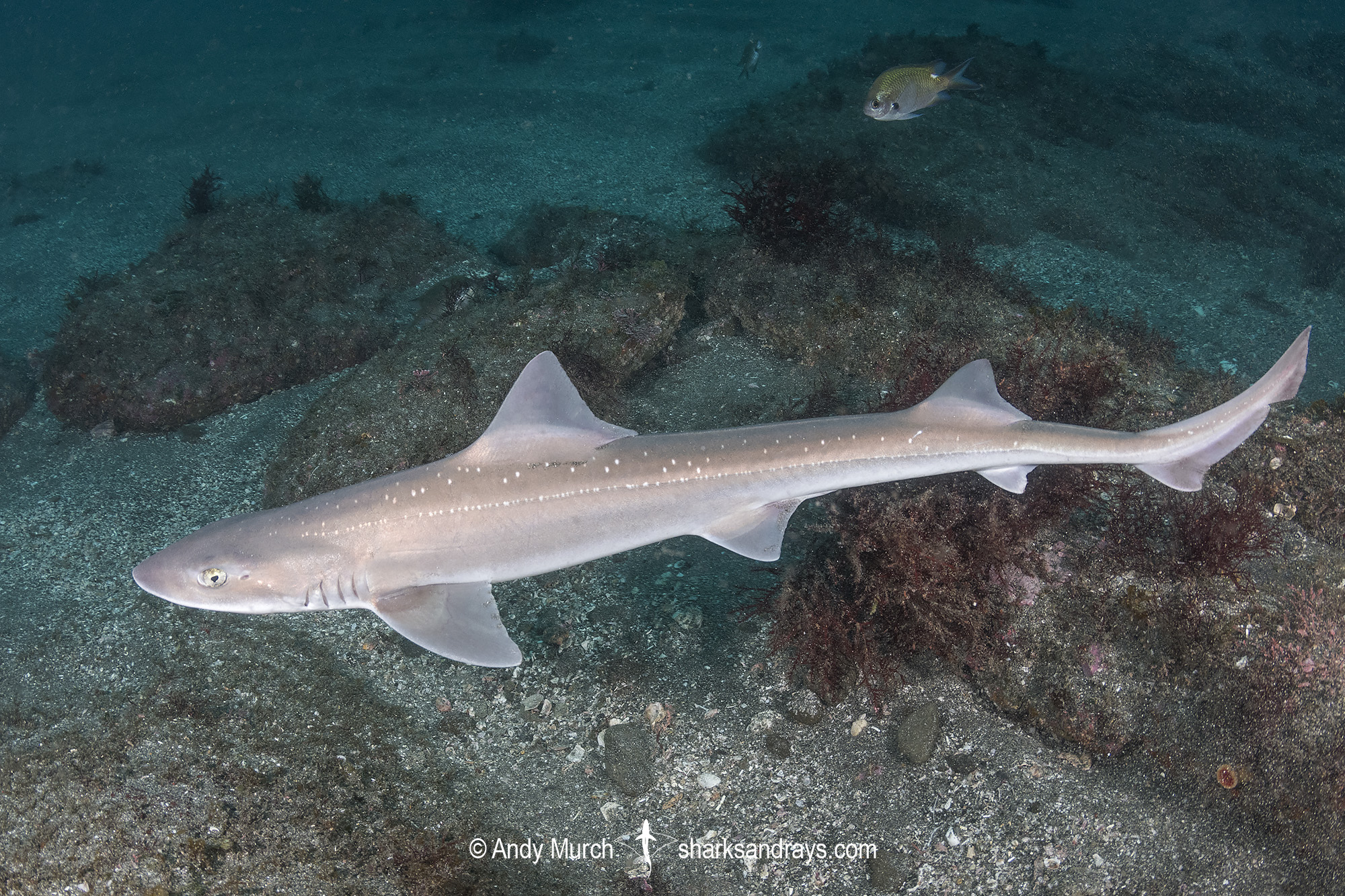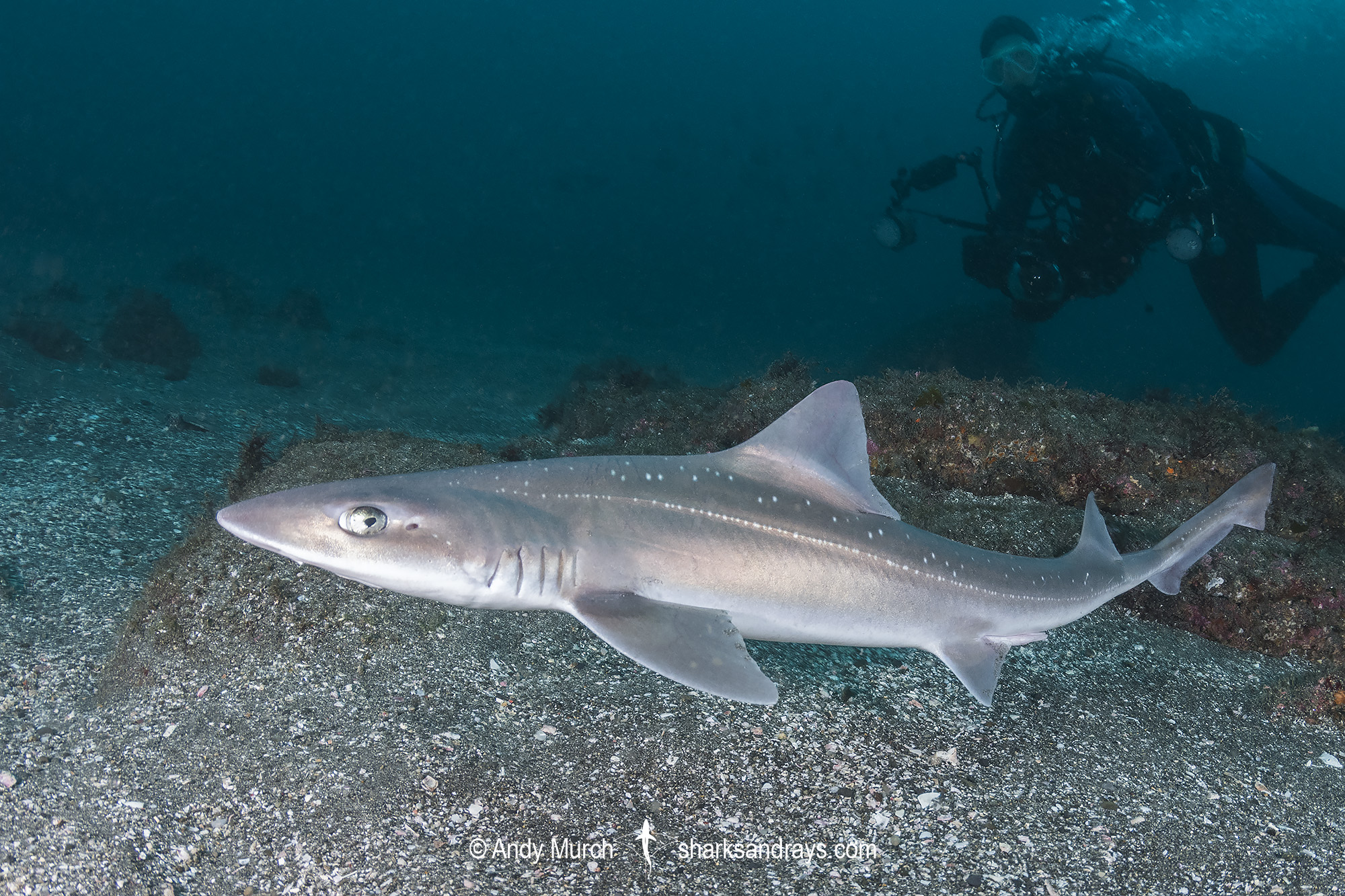Common names
Starspotted Smoothhound Shark.
Binomial
Mustelus manazo.
Synonyms
Galeorhinus manazo, Mustelus monazo.
Identification
Body slender. Snout fairly long and pointed. Upper and lower labial furrows similar in length. Small, visible spiracle behind eye. First dorsal fin origin midway between pectoral fin insertion and free rear tip. Second dorsal fin much larger than anal fin. Dorsal fin posterior margins un-frayed. Lower caudal lobe indistinct. Dorsal coloration greyish-brown with bronzy hues. Dorsal surface above lateral line lightly sprinkled with small white spots. A row of tightly spaced small white spots run along the lateral line from level with the first gill opening almost to the tip of the tail. A very short row of small white spots runs posteriorly from the eye, through the spiracle, diagonally downward to the cheek. Fins unmarked.
Size
Maximum length 135cm. Size at birth approximately 30cm.

Conservation Status
ENDANGERERED
Mustelus manazo is a retained bycatch component of demersal trawl, longline, set net, and gillnet fisheries. Throughout this species’ range, fishing pressure is extremely heavy. Consequently, the starspotted smoothhound is suspected to have undergone a population reduction of 50–79% over the past three decades.

Habitat
A temperate/tropical species inhabiting muddy or sandy substrates on the continental shelf from 1-360m.
Distribution
The starspotted smoothhound shark is found in the northwestern Pacific from China, Japan; Korea, Russia, Taiwan, and Viet Nam. It has also been reported from Kenya but any records from East Africa are almost certainly a different species; probably the whitespot smoothhound (Mustelus palumbes).
Reproduction
A viviparous species with yolk-sac placenta. 1-22 pups per litter. Gestation is approximately 10-12 months. Reproductive parameters appear to vary geographically, with northern populations growing to a larger size and living for a longer period (Yamaguchi et al. 1998, 2000).
Diet
Predates heavily on crustaceans.
Behavior
Unknown.
Reaction to divers
Very shy due to its small size. Unlikely to approach unless baited.
Diving logistics
Rarely seen by divers in most of its range. It may be possible to encounter starspotted smoothhound sharks off the south coast of Honshu where they are often caught by fishermen in the vicinity of Chiba and probably elsewhere along the coast.


